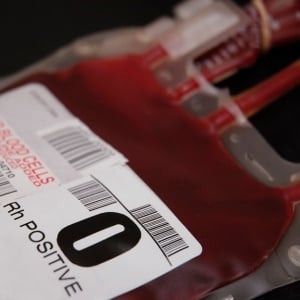
Blood-thinning drugs can save your life by preventing a heart attack or stroke caused by artery-blocking blood clots.
But these are powerful drugs, and a pair of new studies detail side effects people need to understand before taking them.
Risk of life-threatening bleeding
The effectiveness of a class of blood thinners called nonvitamin K oral anticoagulants (NOACs) can be significantly altered through interaction with other drugs, the first study reveals.
In some cases, these drug interactions increase a person's risk of life-threatening bleeding in locations such as the brain and gastrointestinal tract. In other cases, the NOACs' effectiveness is reduced, robbing patients of some protection against stroke and heart attack.
"NOACs alone do not pose a significant risk of bleeding, but the concurrent use of NOACs with certain drugs that share the same metabolic pathways may cause increased risk of major bleeding," said study lead researcher Dr Shang-Hung Chang, an associate professor of cardiology with Chang Gung Memorial Hospital in Taoyuan, Taiwan.
Meanwhile, a second study found that blood thinners can greatly increase a person's risk of finding blood in their urine.
The two studies were published in the Journal of the American Medical Association.
As a result, patients might unnecessarily wind up in the hospital or emergency room, or undergo an unneeded invasive procedure, said senior researcher Dr Robert Nam. He is a professor of surgery and head of genitourinary oncology with Sunnybrook Health Sciences Center in Toronto.
Preventing stroke risk
"Patients and physicians need to discuss this, to try and prevent patients having to be hospitalised or come to the emergency room in the middle of the night," Nam said.
The first study looked at the bleeding risk associated with NOAC drugs dabigatran (Pradaxa), rivaroxaban (Xarelto) and apixaban (Eliquis).
These drugs are primarily used to prevent risk of stroke in people with atrial fibrillation, an abnormal heart rhythm that can cause blood to pool and clot inside the heart, said Dr Deepak Bhatt. A spokesman for the American Heart Association, he is also executive director of interventional cardiovascular programmes at Brigham and Women's Hospital's Heart & Vascular Center in Boston.
NOACs are being used more frequently because they're easier to use and produce fewer side effects than warfarin, an older anticoagulant that has many food and drug interactions, said Bhatt.
There may be other alternatives in the future. According to Taiwanese scientists a blood thinner blood drug based on venom from the Wagler's pit viper was effective in mice, and might prove safer than current anti-clotting meds for humans.
Chang and his colleagues also decided to investigate whether NOACs might have previously unknown interactions with other commonly used medications. The team analysed health data on 91 330 Taiwanese patients with atrial fibrillation who were prescribed an NOAC.
The investigators found that bleeding risk increased significantly when NOACs were used in combination with amiodarone, fluconazole, rifampin and phenytoin – four drugs that treat widely different conditions.
Lower risk of bleeding
The researchers also found that other drugs dampened the effectiveness of NOACs, including atorvastatin, digoxin, and erythromycin or clarithromycin.
Bhatt said he's particularly concerned about the effect of atorvastatin (Lipitor) on NOACs' effectiveness.
"That's a very commonly prescribed cholesterol-lowering drug, especially now that it's generic," Bhatt said. In fact, the researchers found that atorvastatin was the drug most commonly prescribed alongside an NOAC.
"That's a big deal because that means all those patients on both drugs have a lower risk of bleeding, but on the flip side then would have a higher risk of stroke," Bhatt said.
The second study found that people are much more likely to go to the hospital for blood in their urine if they're taking blood thinners.
Nam and his colleagues examined medical data on 2.5 million Ontario residents, including nearly 809 000 who had been prescribed a blood thinner.
During an average follow-up period of seven years, people on blood thinners were six to 10 times more likely to wind up hospitalised or in the ER complaining of blood in their urine compared with others not taking the drugs, Nam said.
Image credit: iStock




 Publications
Publications
 Partners
Partners














